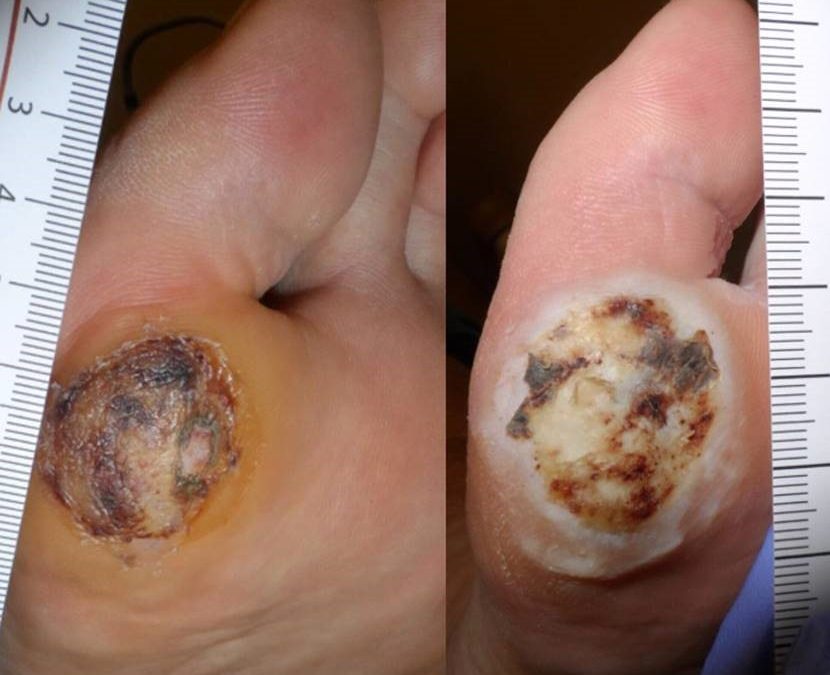If you have been in wound care awhile, you know that a lot of it is pattern recognition. It’s a game of “duck, duck, goose.” I am not sure I would have figured these two cases out, except that I happened to be seeing both patients during the same time frame. That by itself is incredible since in 30 years these are the only two cases like them I can recall, but then again, maybe I missed the others. They say, “Chance Favors the Prepared Mind.”
The backstory is that the patient with the lesion on his first metatarsal head worked offshore. He has diabetes and developed this apparent DFU which was not improving with off-loading. It pretty much meant his offshore career was over. The thing is, it never acted like a DFU. When I would debrided the callous and then put a dressing over it, it didn’t improve.

We finally got it closed after several off-loading attempts, and by applying high dose topical steroid ointment. Why?

He has psoriatic arthritis, and it finally dawned on me one day that the lesion looked JUST like the lesion on the plantar surface of another patient. She had just been diagnosed with psoriatic arthritis. I finally understood that this was a psoriatic plaque. He had other areas of plaque psoriasis (not the palmoplantar type).
This is the plantar foot of the other patient. I had been struggling with this thing literally for years. And what makes the case below interesting is that she had developed a leukocytoclastic vasculitis, the cause of which I never figured out, but at the time I didn’t realize she had an autoimmune problem (psoriatic arthritis), in addition to her diabetes. She was prescribed the same topical steroid ointment but hasn’t been using it. We will see if the lesion improves now that she is.

I wanted to post these because if your instinct is that something is not a DFU, maybe it isn’t.

Dr. Fife is a world renowned wound care physician dedicated to improving patient outcomes through quality driven care. Please visit my blog at CarolineFifeMD.com and my Youtube channel at https://www.youtube.com/c/carolinefifemd/videos
The opinions, comments, and content expressed or implied in my statements are solely my own and do not necessarily reflect the position or views of Intellicure or any of the boards on which I serve.



